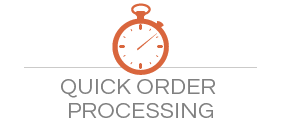Related Content
Know Your Connector

Older NiCd and NiMh batteries originally had just one main charge connector, while the newer lipo batteries now have two main connectors, and sometimes a third connector (battery packs specifically designed for transmitters). The two main connectors are; main charge connector, which is used for high current use and/ or charging, and the balance connector, which is used predominantly during the charge process to balance each individual cell's voltage equally.
Choosing the right connector is about personal preference and depends on the application you are using the battery for; whether it's for smaller models and toys, or high performance engines that require a very high current burst (100-200amp).
If you are someone that prefers to solder your own connector, you will have a preference on the type you use. Some connectors look great and are very easy to use, but when it comes to changing them over and adding new ones, they can be very frustrating.
Balance Connectors
Balance connectors are available in 4 main variations. There are more, but we only focus on the main ones. The type of balance connector depends on the battery manufacturer. JST-XH is the most commonly used balance connector these days; nearly all of our batteries currently have standard JST-XH balance connectors.
Although the basic principles of all balance connectors are the same, some manufacturers use a slightly different sequence for their wiring of the balance connector. There are adaptors readily available to convert one balance connector to another. But it is important to make sure you know what connector your batteries, chargers, balancers or lipo alarms use.

Main Power Connectors
There are several variations of main connectors available. Deciding on which one is right for you is a case of a combination of the application (subsequent current demands), size of the model and restrictions the physical pack and wiring may provide.

This is a small power connector and is commonly found on small models, toys and small lipo packs. JST connectors carry low currents (5 amps) and are most commonly found in on-board electrics such as servos, gyros, receivers and receiver switches.
These are very popular connectors and seem to be the most commonly used. They are rated at 50 amps continuous load. When soldering, they require heatshrink to insulate the positive and negative terminals.

EC3's are becoming very popular as they use true "bullet style" connection pins and are rated for up to 60 amps of continuous load. Most will agree bullet pins make for the best possible connection when dealing with high current applications, due to a larger surface contact area.

These are a longer version of the EC3 and because the bullet pins are longer (5mm) they have an greater surface area for contact. EC5's are rated for up to 120 amps of continuous load. These are perfect for large 1/4 scale electrics and 700 size electric helis. They are the more expensive connectors in the market, but offer a good solution for very high current situations.
XT-60 connectors are becoming more and more popular due to competitive pricing and overall performance. XT60 are one of the easier connectors to solder, providing opposing solder terminals with lots of space to work with. However, they still require heatshrink to insulate the negative and positive terminals.
These are lower amp connectors and were once very popular, especially with the electric RC car, truck, and boats. However, since higher amp Lipo's have entered the scene, Tamiya plugs are used less and less. You will still find them on entry level RC hobby products, but they are not really designed to take large currents and tend to get very hot, and in some extreme cases, melt together.
Uused exclusively on electric Traxxas RC vehicles/boats but can fit to any high current application up to about 100 amps. Traxxas connectors look great, but they have a fundamental design flaw when it comes to soldering. They use small gold pins that the wire is soldered to. The small pin is then inserted into the plastic connector, but soldering the pins is very tricky, it needs to be very neat and within 3-4mm of the bottom of the pin.
The connectors can be joined together to make a positive and negative all in one connection or left apart for connecting batteries in series. Anderson Sermos connectors are also the only non gender connector available. This means that not only can they be connected in series, but each connector can be male or female.
These connectors are commonly found on our high C and mah rated Lipo batteries. These are rated at 93amps, with a large plastic connector that can handle very thick gauge wire.
Based on the original XT60 design, the XT90 is a much larger connector. Designed for much higher currents as well as large gauge cable. The connector is very easy to solder and can handle currents up to 90amps.











